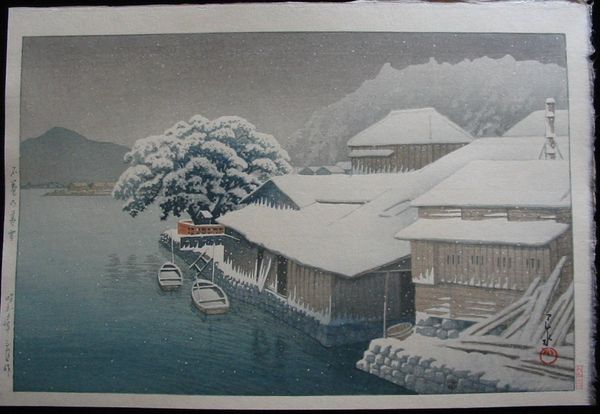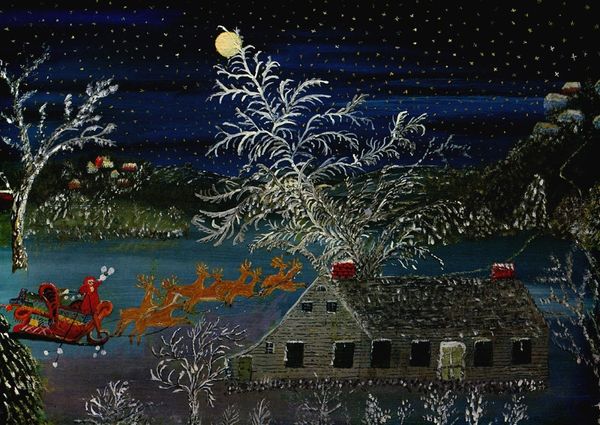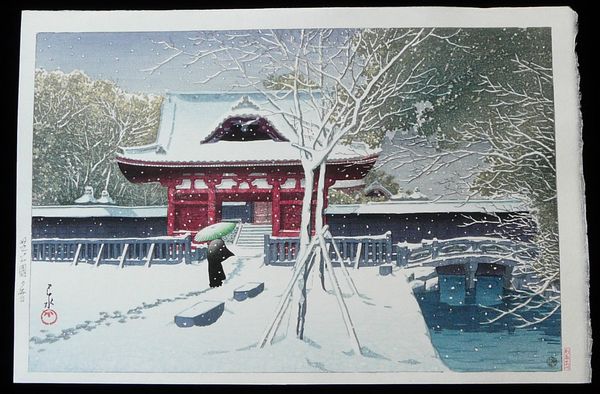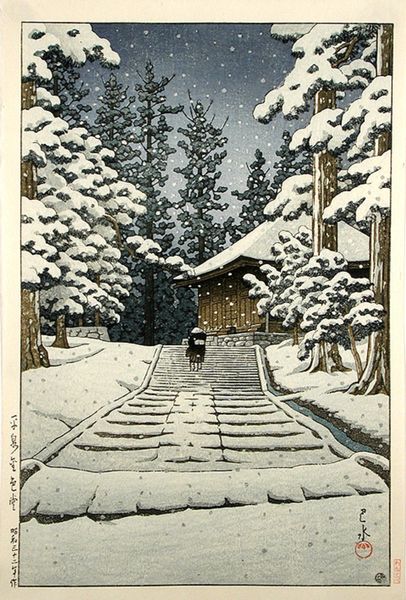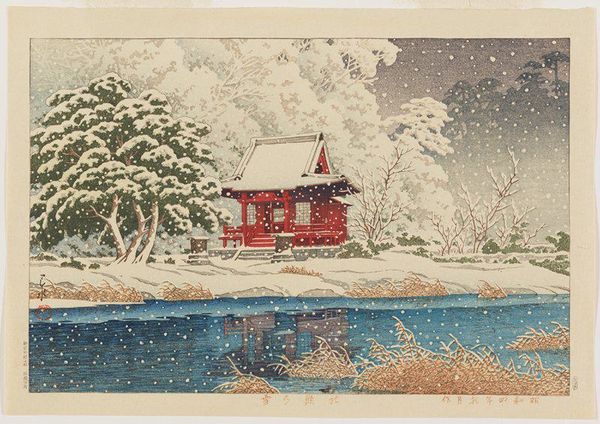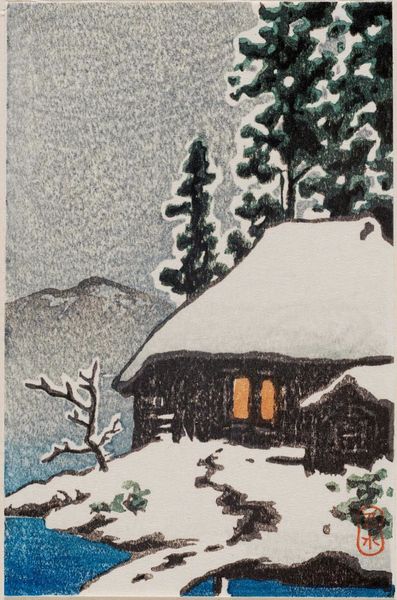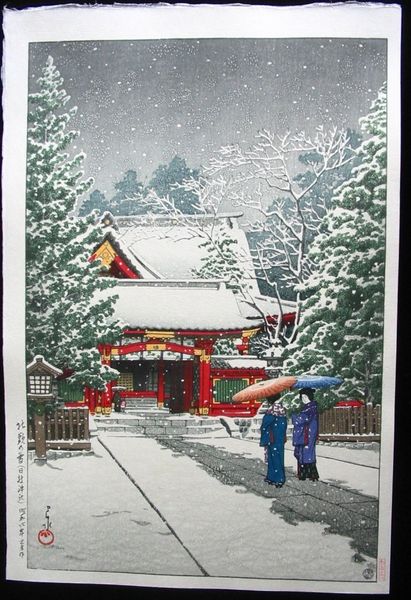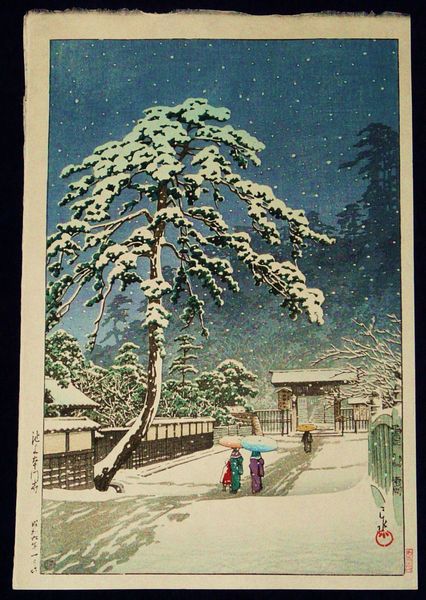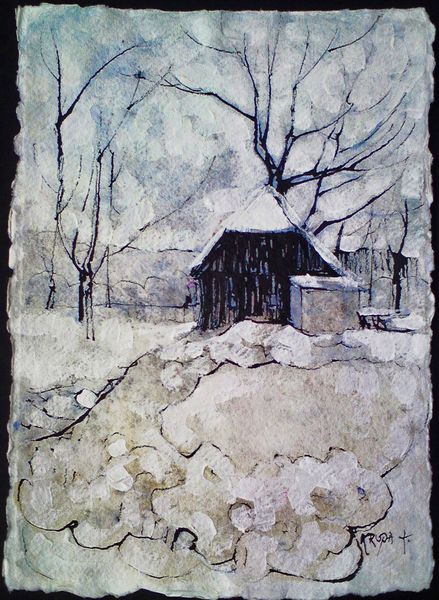
Copyright: Public domain Japan
Curator: It evokes such a serene silence, doesn't it? The air seems to hush in respect of this little shrine amidst a gentle snowfall. Editor: Indeed. We are looking at "Kansau Shrine in Snow at Lake Tazawa," a woodblock print crafted by Hasui Kawase in 1927. Let's consider its place within the artistic landscape of its time. Curator: I'm struck by how Kawase frames Shinto spirituality; this solitary structure speaks to resilience and persistence but also isolation. What is the artist really trying to communicate about the place of devotion and of the individual? I see the figure is missing and that omission becomes a real point of tension. Editor: Ukiyo-e prints such as this became incredibly popular during the Edo and Taisho periods precisely for how they situated architecture within everyday life. In this composition we see the shrine functioning as an important pillar of cultural and spiritual life. Think of this against the rise of westernisation in Japan: it represents a firm, symbolic stand for a more authentic, and less colonised way of being in the world. Curator: The composition really accentuates a palpable sense of disconnect from nature and community and connects with larger postcolonial theoretical debates around indigeneity, claiming power, and identity struggles. Does the snowy climate serve to conceal the rich culture, making it an inaccessible one for most people? Editor: We see how the commercial production of these images made them available to audiences globally, fostering greater interest in the specific regional artistic output. However, these popular prints must be viewed within this history. Curator: I think a powerful question we need to consider, then, is how does place construct and reinforce gendered and racialised meanings, and shape social-cultural interactions in ways that resist colonialist oppression? Editor: Precisely. Kawase allows us to reconsider not only how these places were interpreted then, but the enduring legacy and meaning in today’s rapidly shifting geopolitical context. Curator: Seeing the Kansau Shrine as a focal point is particularly relevant today. It asks us to really question accessibility and the preservation of history when the colonisers decide and claim a grand ownership of these historical pieces and their contextual values. Editor: This artwork shows us how these cultural representations shift, endure and resist hegemonic viewpoints.
Comments
No comments
Be the first to comment and join the conversation on the ultimate creative platform.

